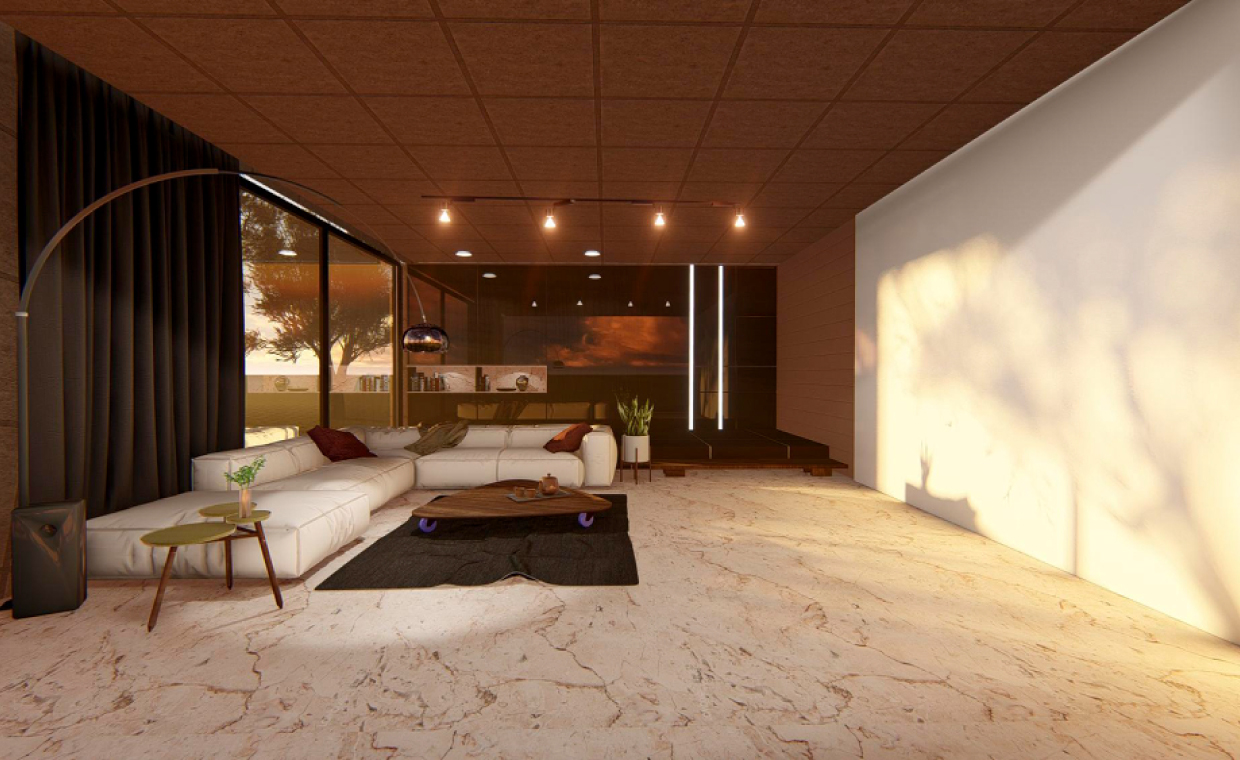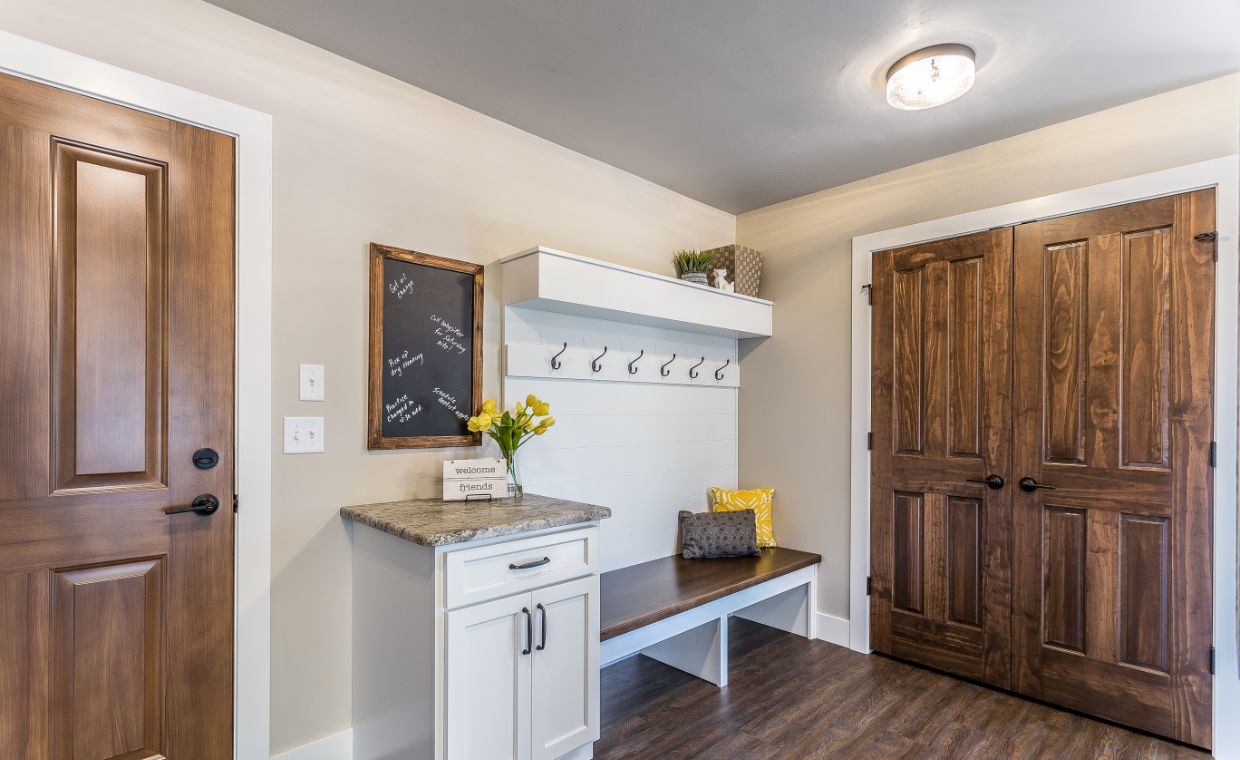
Creating a bedroom that fosters deep, restful sleep is more than just buying a comfortable bed. The way you design and organise your bedroom can dramatically impact the quality of your sleep. By focusing on comfort, minimalism, and ambiance, you can transform your space into a sleep sanctuary. Gharpedia brings you bedroom organising tips to help you sleep peacefully.
Bedroom Organising Tips for Good Sleep
Follow these bedroom organising tips for a peaceful sleep:
1. Think About Your Bed

Your bed is the most critical element in your bedroom. The type of mattress you choose can significantly affect your sleep quality. Look for a mattress that supports your back and aligns with your sleeping position. While some people prefer memory foam, others may find hybrid or innerspring mattresses more comfortable.
Additionally, choose bedding that feels good against your skin. Soft, breathable fabrics like cotton, bamboo, or linen help regulate temperature and prevent overheating during the night.
2. Use Calming Colours

The colours you choose for your bedroom can influence your mood and ability to fall asleep. Choose soothing, neutral shades like soft blues, greens, or muted earth tones. These colours have a calming effect and help lower stress levels.
Avoid bright, stimulating colours like red or vibrant orange, as they can increase alertness and make it harder to wind down.
3. Limit Clutter
A cluttered bedroom can feel overwhelming and stressful, making it harder to relax at the end of the day. Keep surfaces like bedside tables and dressers clear of unnecessary items. A minimalist approach will create a sense of calm and order, making the room feel more spacious and inviting.
Organise storage areas like closets and drawers to keep everything tidy. This reduces visual distractions and helps keep your mind at ease when it’s time to sleep.
4. Control Lighting

Light plays a significant role in regulating your sleep-wake cycle, so controlling the lighting in your bedroom is crucial for good sleep. During the day, allow natural light to enter the room to reinforce your circadian rhythm. But at night, reduce light exposure by using blackout curtains or shades that block outside light.
Install dimmable lights or use warm, soft lighting in the evening to signal to your brain that it’s time to wind down. Avoid blue light from electronics like smartphones or laptops close to bedtime, as it can interfere with melatonin production and disrupt your sleep cycle.
5. Optimise Temperature
Temperature can make or break a good night’s sleep. If your room is too hot or cold, it can cause discomfort and disturb your rest. The ideal bedroom temperature for sleep is around 15-19°C (60-67°F). Ensure that your room is well-ventilated and adjust your bedding to suit the season – using lighter blankets in summer and thicker comforters in winter.
6. Incorporate Cosy Flooring

Flooring can play a vital role in how comfortable and inviting your bedroom feels. Light hardwood floors are a popular choice for their durability and easy maintenance. Similarly, light laminate flooring is a good cost-effective alternative. Adding a soft, plush area rug can make a significant difference on these floors when it comes to comfort. Rugs not only provide warmth but also add a layer of sound insulation, reducing noise and creating a peaceful atmosphere.
For those in colder climates, consider carpet flooring, which adds warmth underfoot and makes the room feel cosier, especially during the winter months.
7. Comfort of Nature

Bringing elements of nature into your bedroom design can promote relaxation and a sense of well-being. Houseplants, for example, help purify the air and create a calming atmosphere. Consider adding low-maintenance plants like snake plants or aloe vera, which are known to improve indoor air quality.
You can also introduce natural textures like wooden furniture, wool rugs, or linen curtains to add warmth and serenity to your bedroom environment.
8. Soundproofing
Another important bedroom tips or good sleep is soundproofing your bedroom. Noise can be a major disruptor to sleep. To block out unwanted noise, consider soundproofing your bedroom by using thick curtains, carpets, or area rugs that absorb sound. Alternatively, white noise machines or nature soundscapes can help drown out distractions and create a peaceful environment conducive to sleep.
9. Personal Touches
While keeping your bedroom serene and clutter-free is essential, adding a few personal touches can make it feel more inviting and comfortable. Select artwork or decor that makes you feel relaxed and happy but avoid anything too busy or stimulating.
Consider adding soft, textured throw pillows or blankets for an extra layer of comfort, but avoid overdoing it to maintain that minimalist, calming aesthetic.
Conclusion
A good and sound sleep is important for your health. The aforementioned bedroom organising tips will help you to achieve a good sleep. You may not need to implement every bedroom tips, but implement whichever suits you the most. What bedroom tricks and changes help you get the most sleep? Do you already perform any of these bedroom optimizations? How did they contribute? Tell us in the comments!
Also Read: How to Design a Bedroom?






























